‘Vesaliana’ exhibition now on display
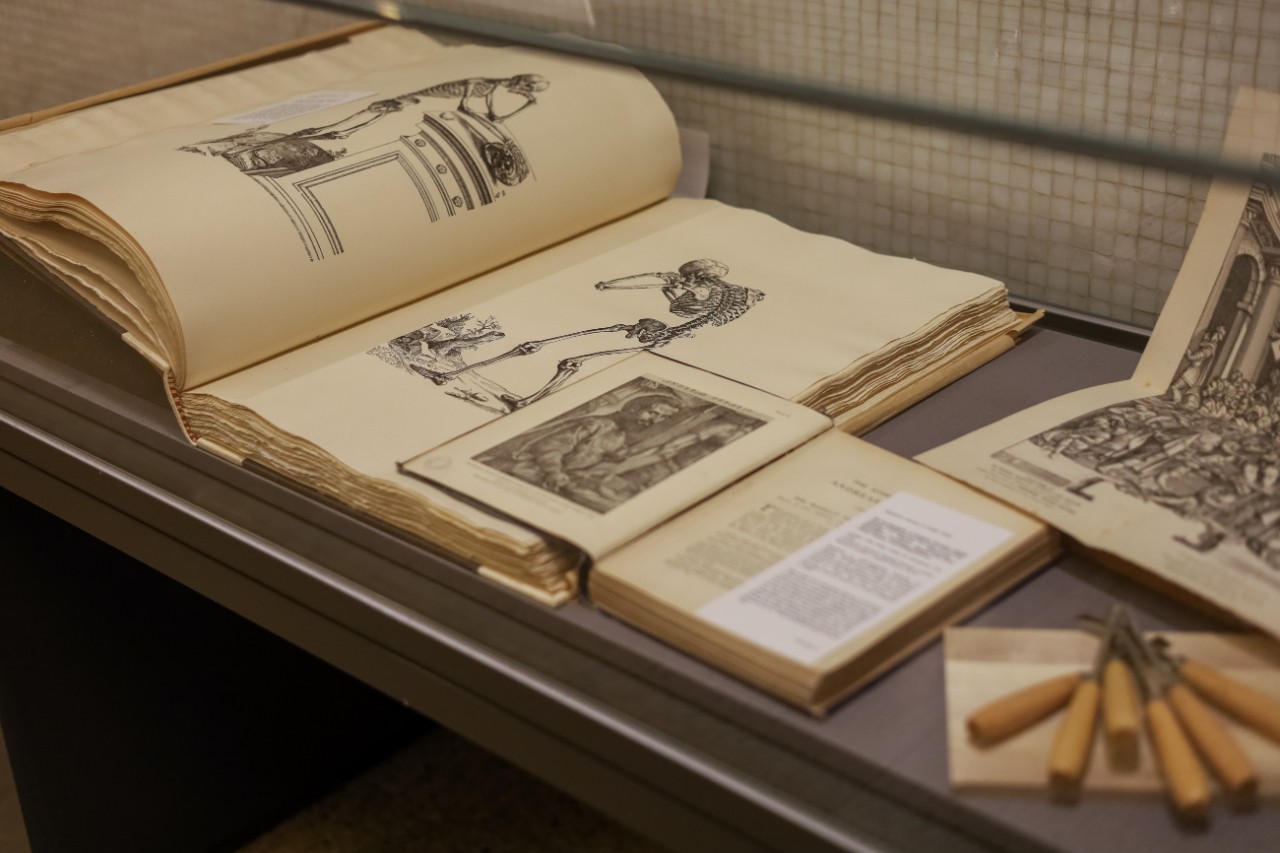
Vesaliana: Illustrating anatomy from frog man to Renaissance man opened on level 3 of Fisher Library at the end of February. Curated by Associate Professor Cate Storey OAM (Sydney Medical School) in partnership with Emily Kang (Rare Books and Special Collections), this exhibition features a variety of objects from the Library’s collection.
With the recent purchase of a magnificent 1st edition of Andreas Vesalius’ de Humani corporis fabrica published in Padua in 1543, the Library has acquired one of the most influential anatomy texts of all times. In 1903, Sir William Osler wrote to his friend, neighbour, bibliographer and pioneer neurosurgeon, Harvey Cushing: “…besides the two copies of the ’43 edition of the de Humani corporis fabrica I have just ordered a third. We cannot have too many copies in America and no Medical Library is complete without one…”
Vesalius, Professor of Anatomy at Padua, was only 29 when he created this masterpiece of Renaissance art and science, which was produced from dissections he performed over three years. His work marked a monumental departure from the diagrammatic anatomic representations of the past, and fundamentally transformed the depiction and the understanding of the human forms.
Featuring the remarkable collection of Vesaliana from our Rare Books & Special Collections, this exhibition demonstrates the significance and impact of this work.
The exhibition is now open on level 3, Fisher Library.
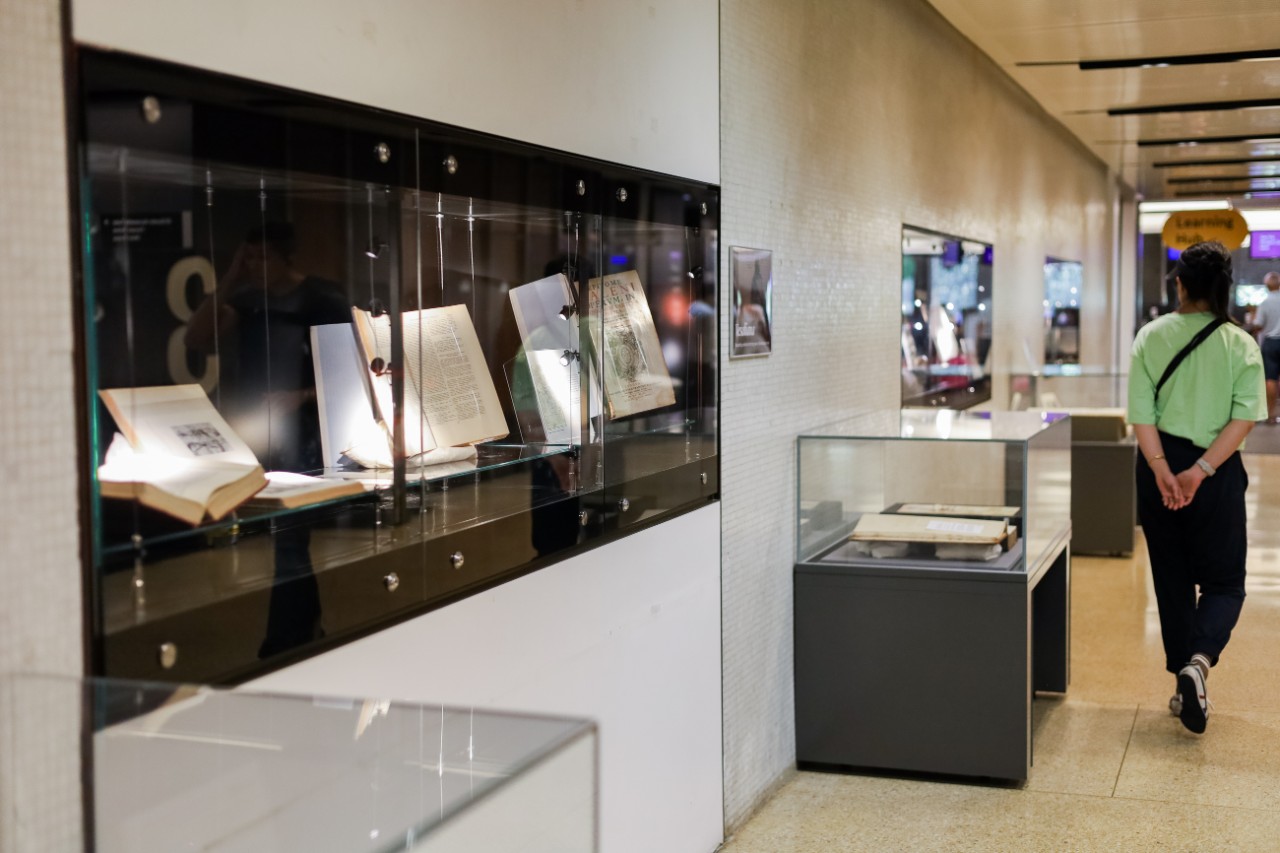
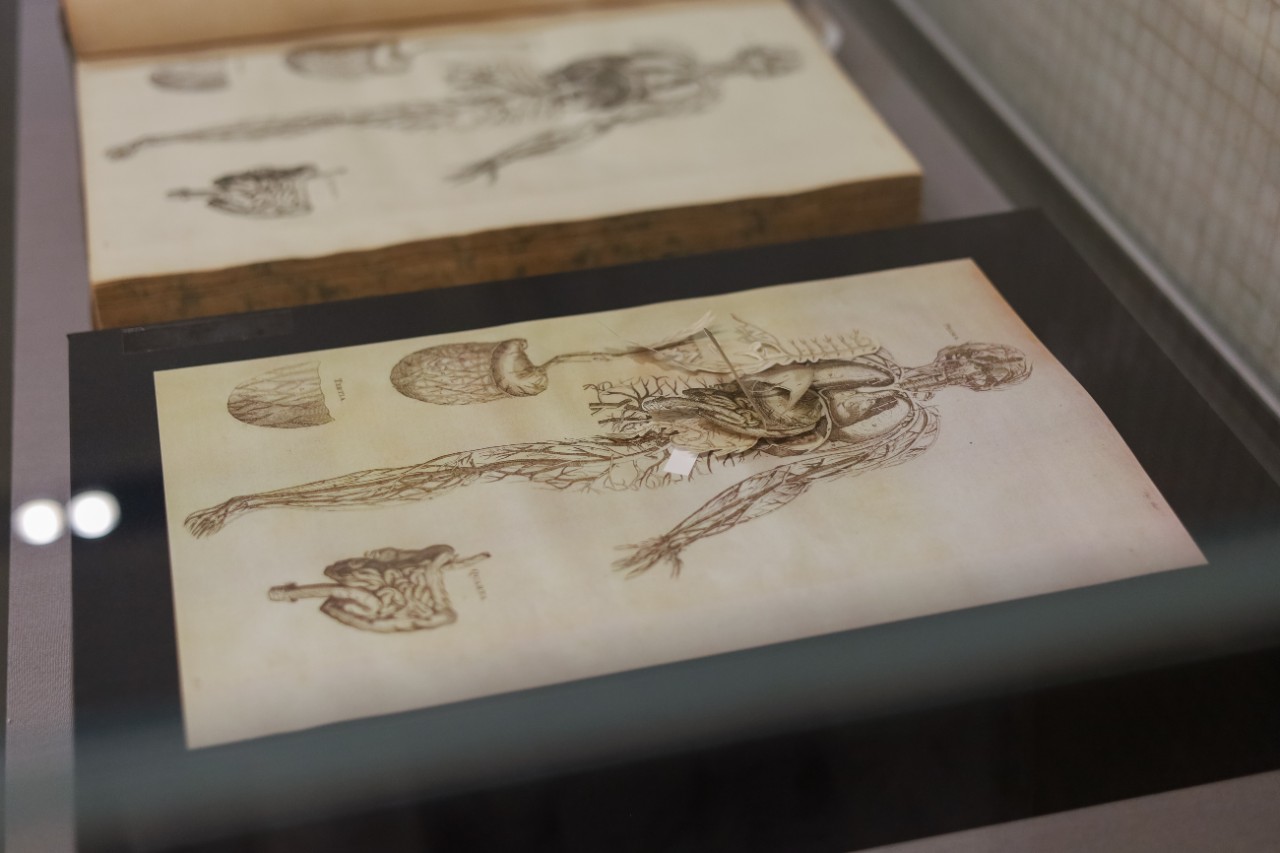
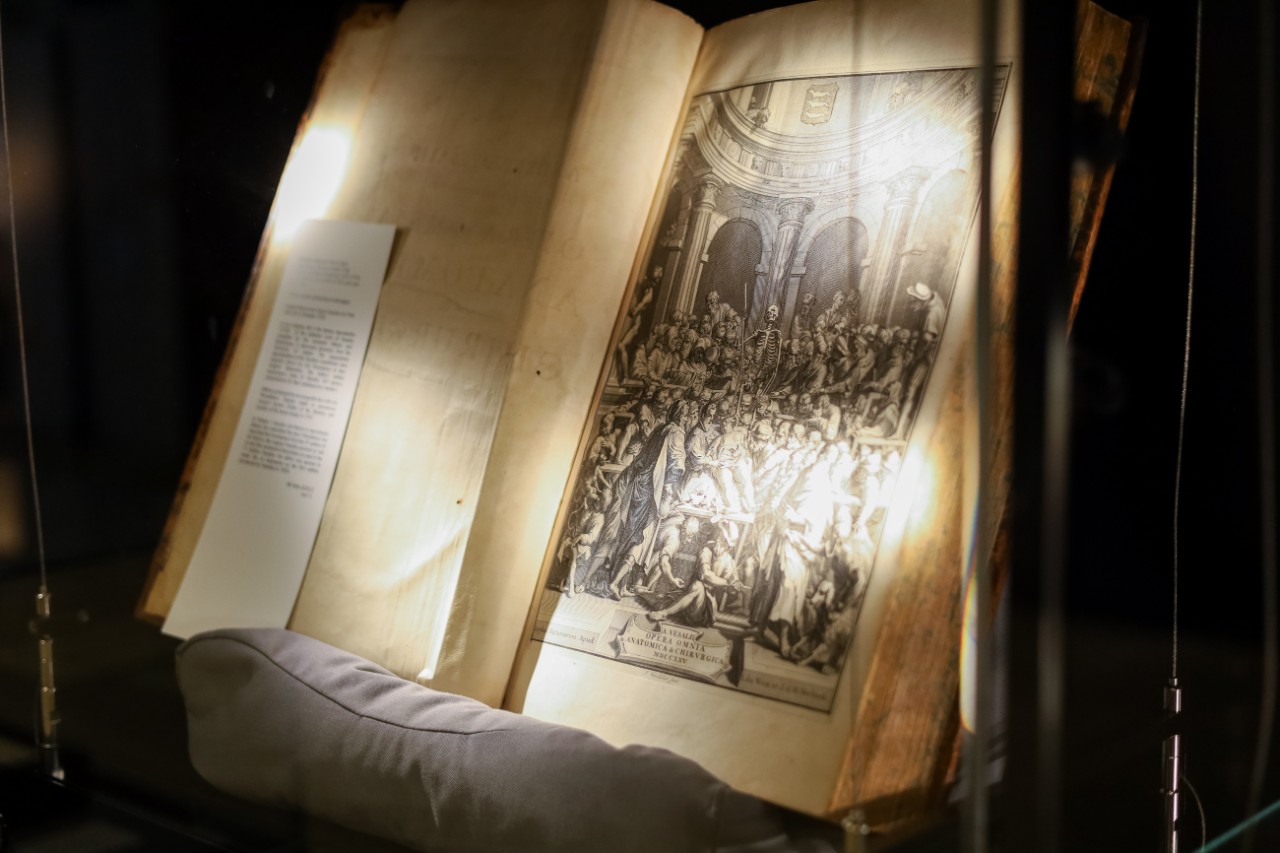
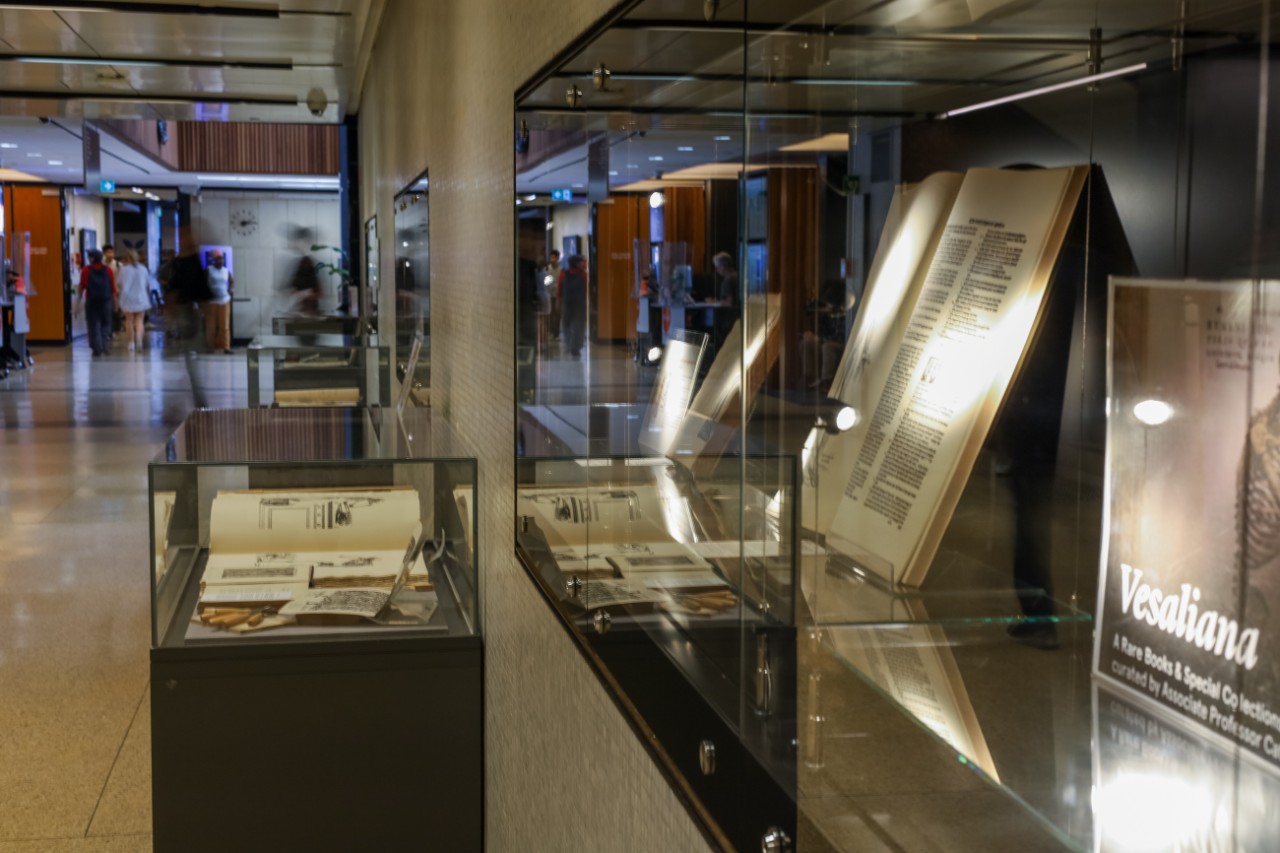
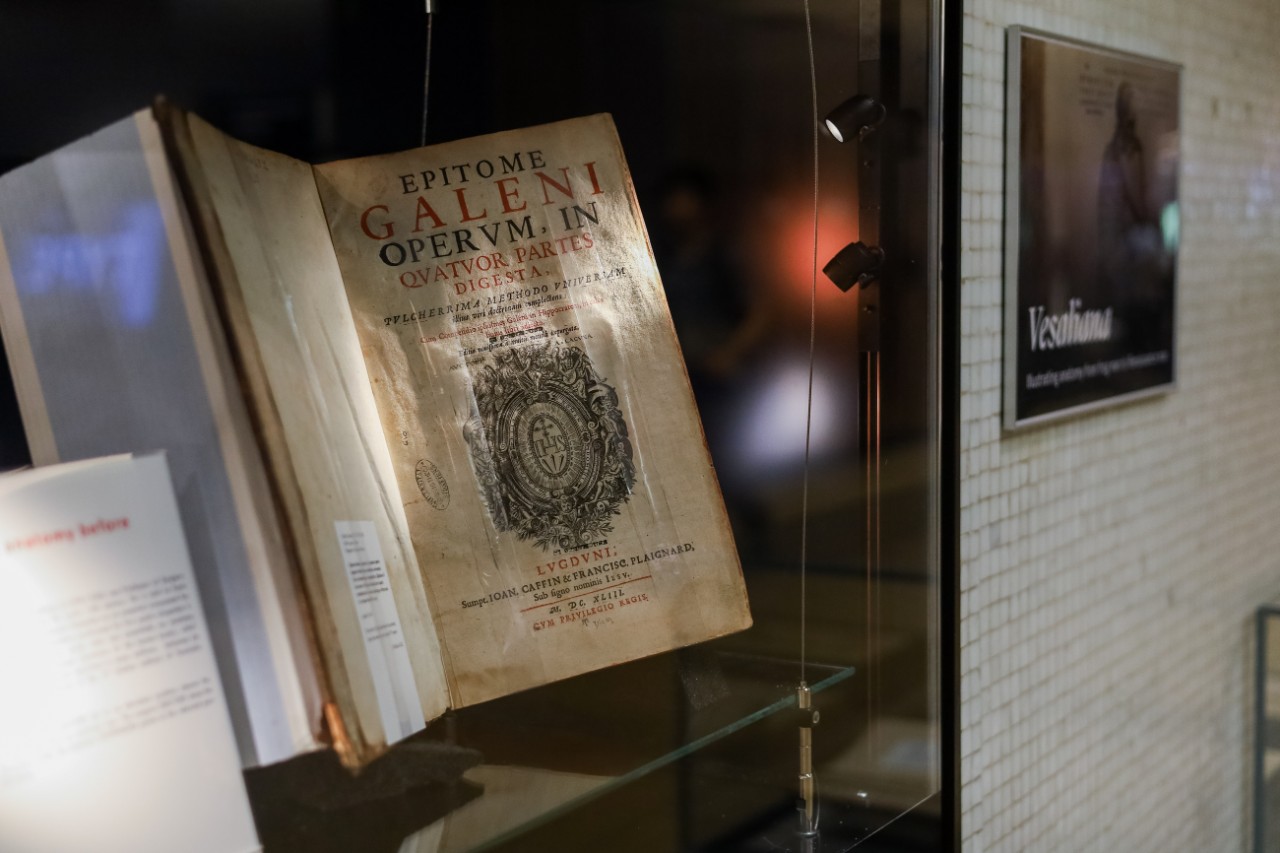
- 1
- 3
- 4
- 5